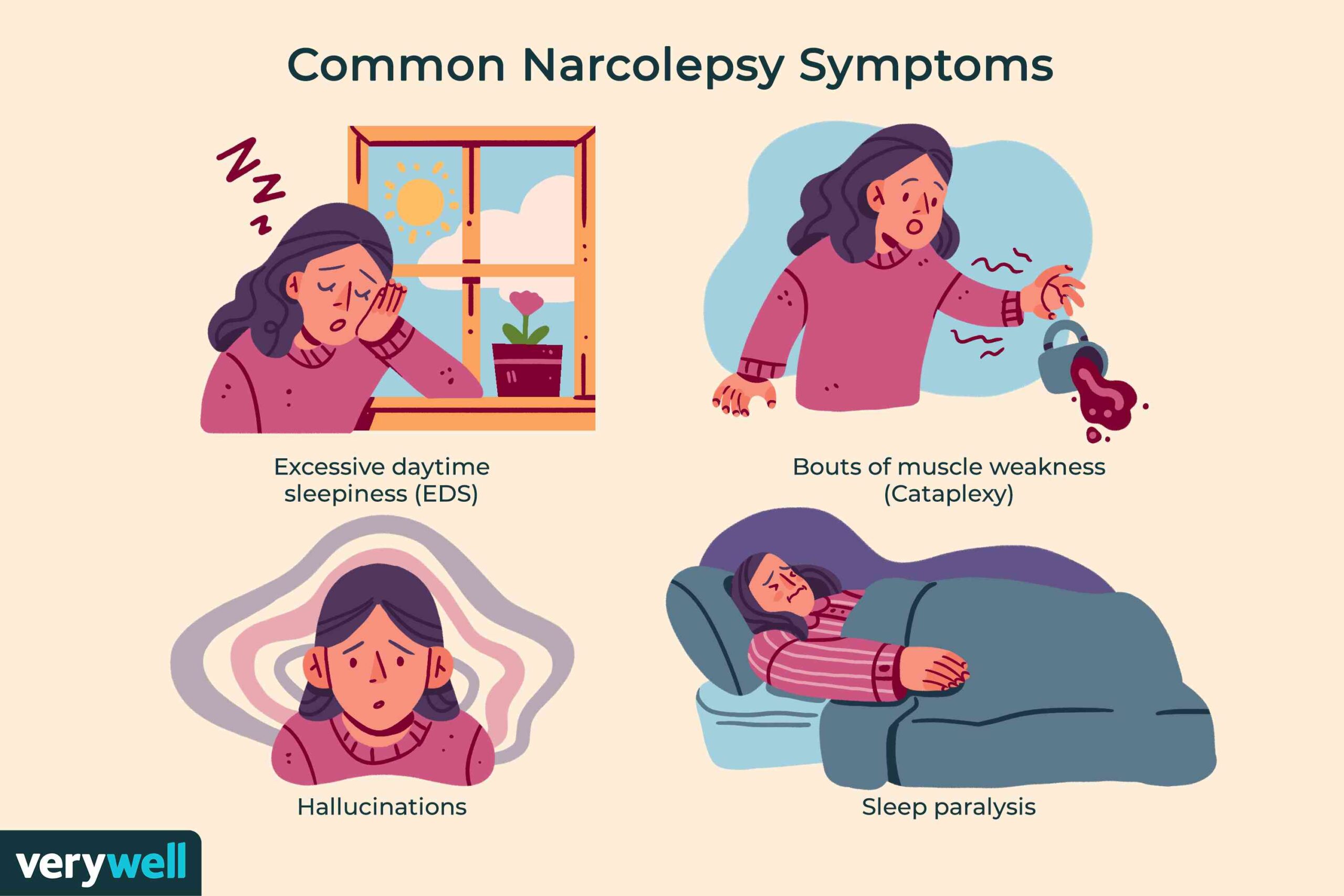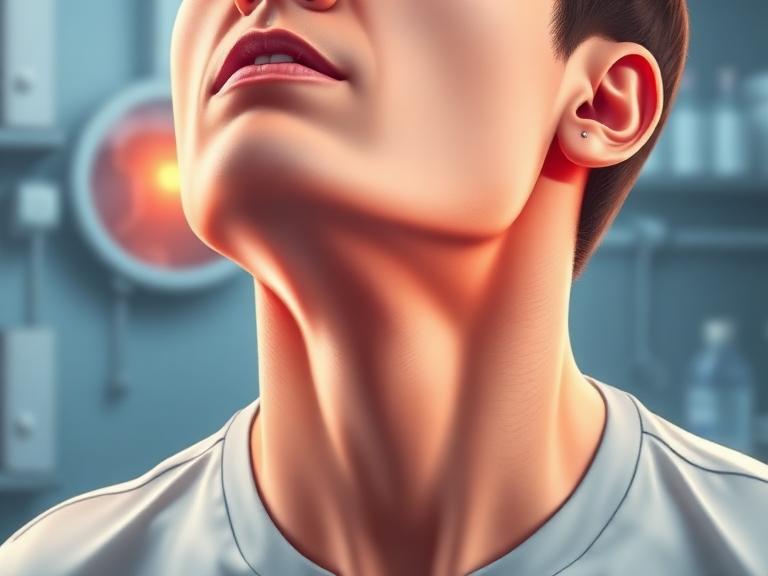Difference between glaucoma and cataract-various-aspects-
Cataracts and glaucoma are both prevalent degenerative eye diseases and possible causes of blindness. Because both illnesses can be age-related and ultimately cause a loss of vision, they are frequently misdiagnosed. Although there are some parallels between the two situations, they are not identical. The primary distinctions between cataracts and glaucoma, their definition, symptoms, causes, and therapy choices will be covered in this article.


What is glaucoma?
The optic nerve, which links the eye to the brain, is harmed by glaucoma, a prevalent eye ailment. Although glaucoma can strike at any age, it usually affects older adults 70 and older. A buildup of fluid at the front of your eye is the typical cause of glaucoma. People with a parent or sibling who have the illness are more likely to get it, and it can be passed down through genes.

If any patient of ENT requires any surgery, opd consultation or online consultation in clinic of ENT specialist Doctor Dr Sagar Rajkuwar ,he may contact him at the following address-
Prabha ENT clinic, plot no 345,Saigram colony, opposite Indoline furniture Ambad link road, Ambad ,1 km from Pathardi phata Nashik ,422010, Maharashtra, India-Dr Sagar Rajkuwar (MS-ENT), Cell no- 7387590194 , 9892596635
Issued in public interest by –
Different forms of glaucoma include:
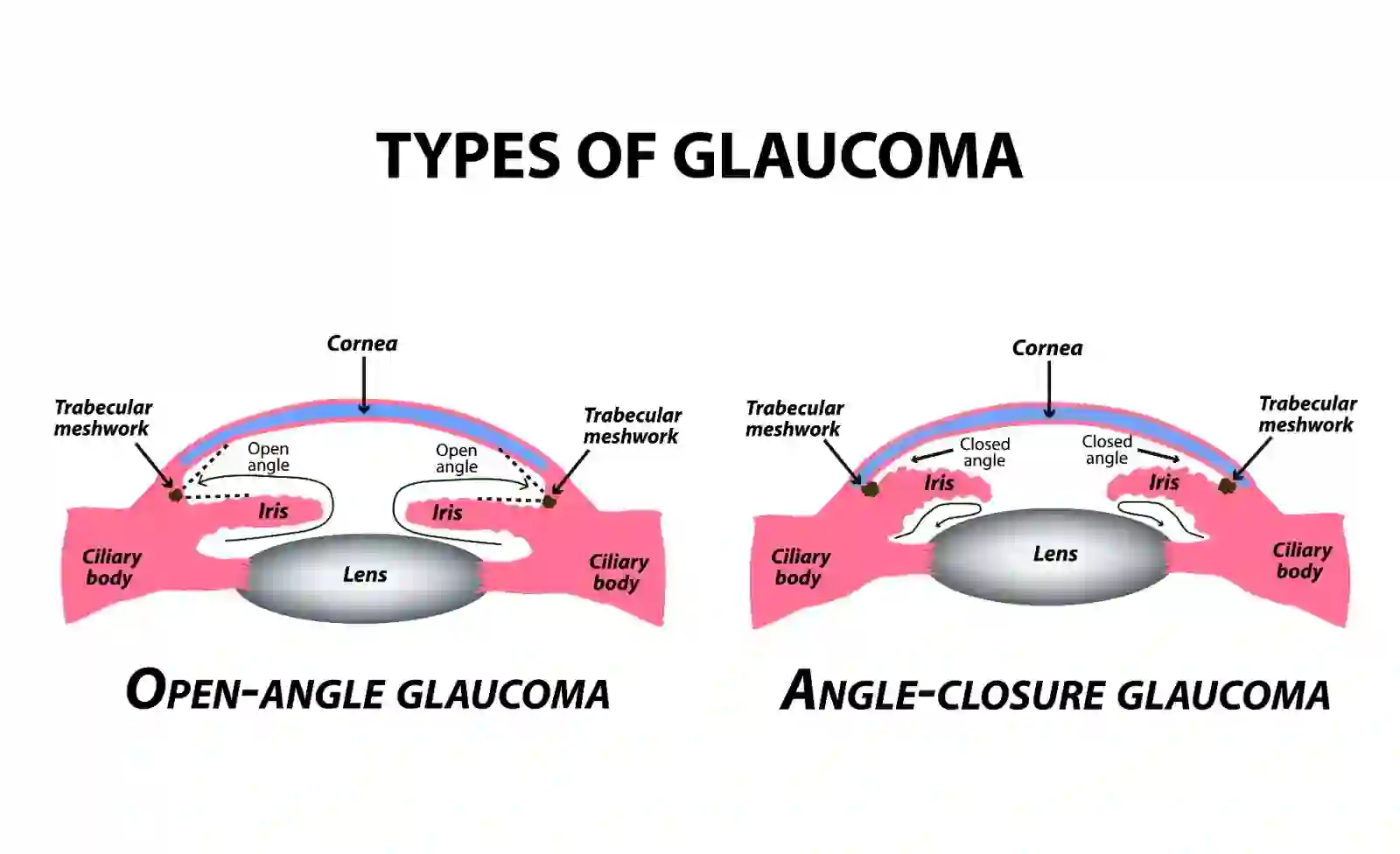

- The most prevalent kind, primary open angle glaucoma, is brought on by an obstruction of your eye’s drainage ducts and manifests slowly.
- The less prevalent form of glaucoma is called acute angle closure glaucoma. It is caused by a sudden blockage in the angle or the door of the eye, which prevents the drainage channels from functioning properly and causes a rapid increase in eye pressure.
- Secondary glaucoma is caused by an underlying illness, such as diabetes, steroids, uveitis (eye inflammation), or surgery.
- Congenital glaucoma: A rare form of glaucoma known as childhood glaucoma that affects young children as a result of an anomaly.
What is a cataract?
Cataracts are a prevalent disorder that affects eyesight. They are hazy spots that appear on the surface of your eye’s lens. The majority of individuals over the age of 65 are affected by cataracts, which lead to hazy or unclear vision. As protein clumps grow larger over time on the lens, they develop.
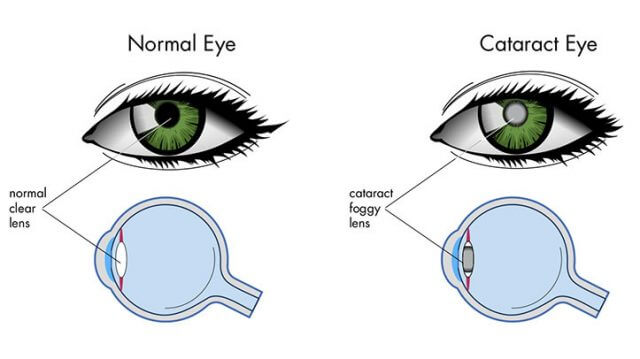

The illness may manifest itself in one or both eyes, but each eye can only have one cataract.
The signs of cataracts and glaucoma
In its earliest stages, glaucoma may be asymptomatic. However, while there are a few distinctions between glaucoma and cataracts, they can have many of the same symptoms, such as hazy vision, halos surrounding lights, and diminished night vision.
You might see blind spots or patches if you have open angle glaucoma since it impacts your peripheral vision. This occurs gradually, and before a patient notices any major issue, they may have lost 80–90% of their eyesight. Early detection and treatment can prevent this irreparable vision loss. When one has cataracts, one’s vision tends to be hazy or cloudy, and nighttime glare may occur.
The eye may be painful in closed angle glaucoma. Your eye might look red and feel firm, and you may also experience severe eye pain, headache, nausea/vomiting. Halos surrounding light at night is one of the typical signs of glaucoma with a closed angle in its early stages. In most cases, though, the ailment is discovered during a regular optometrist checkup since there are no symptoms.
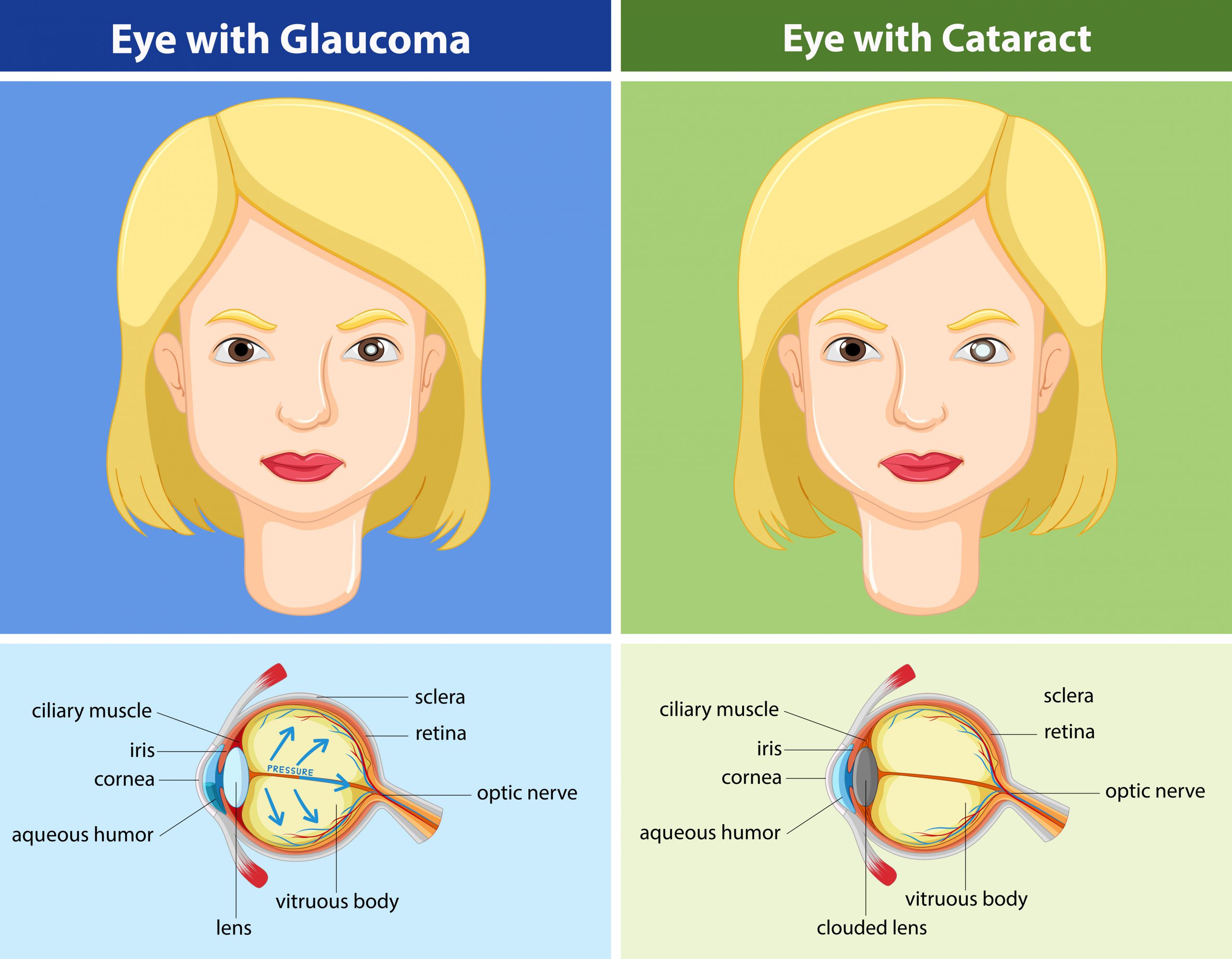

For update on further important health related topics and frequently asked questions on health topics by general population please click on the link given below to join our WhatsApp group –
https://chat.whatsapp.com/Lv3NbcguOBS5ow6X9DpMMA
Issued in public interest by –
What distinguishes cataracts from glaucoma?
The way that glaucoma and cataracts impact the eye is one of their primary differences. Two separate parts of the eye are impacted by the two disorders. A fluid buildup in the eye causes pressure in the eye, which results in glaucoma and harms the optic nerve located in the back of the eye. Protein clumps on the lens, which is located at the front of the eye, are a feature of cataracts.
The fact that vision loss caused by cataracts may be treated with surgery but not in glaucoma patients is another notable distinction. Cataracts may be treated with cataract surgery, whereas glaucoma is often treated with microsurgical procedures like a trabeculectomy, laser surgery, or medicated eye drops.
Is there a connection between glaucoma and cataracts?
Although cataracts and glaucoma are often not directly related, one ailment might potentially cause the other. A cataract can grow large enough to obstruct the eye’s drainage channels, resulting in fluid accumulation and elevated pressure that causes glaucoma. In addition, you run the risk of developing cataracts following glaucoma surgery.
Is it possible to have cataracts and glaucoma at the same time?
It is possible to have cataracts and glaucoma simultaneously, and one may cause the other. Surgery can be used to cure this, and the pressure on the optic nerve of your eye can be relieved by removing the cataract and clearing the drainage channel.
It’s also possible that glaucoma treatment hastens the development of cataracts. In these cases, studies indicate that it can be helpful to postpone cataract removal surgery for a year or two following glaucoma surgery to allow your eye time to recover before the cataract is removed. Another option is to perform cataract surgery either alone or in conjunction with glaucoma treatment, such as endoscopic cyclophotocoagulation (ECP), laser therapy, or microstenting. Numerous more recent, less invasive surgical methods are now available for the treatment of glaucoma as well.
Therapy for cataracts and glaucoma
Depending on how severe the illness is, the optimum course of action will vary. The most common course of action for treating cataracts is surgery. Although changing your glasses or contact lens prescription may help you see better, surgery will ultimately be necessary if this has not been successful and cataracts are impairing your quality of life.
Treatment for cataracts
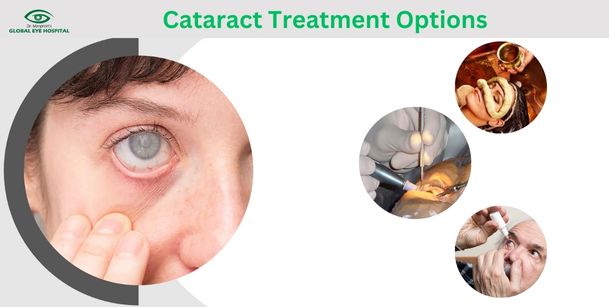

The clouded lens is removed and replaced with an artificial one during cataract surgery.
This is often accomplished by phacoemulsification surgery, which uses ultrasonic radiation to emulsify the nucleus of the lens prior to the implantation of an intraocular lens. Under local anesthetic, cataract surgery is often done as day surgery.
Options for lens implants include:
- monofocal lenses, also called standard lenses, only concentrate on far, close, or intermediate vision.
- These are more contemporary lenses with an extended depth of focus that can offer distance, intermediate, and some close vision without sacrificing contrast sensitivity.
- multifocal lenses: split the light to concentrate on close, intermediate, and distant vision. These are only appropriate if there are no other eye issues, such as dry eye, glaucoma, retinal illness, etc.
toric lenses: this lens corrects the form of the eye by tailoring the power of the new lens in the two different meridians to further enhance the quality of vision. - To ascertain the appropriateness of the different lens types for you, your ophthalmologist will evaluate your medical history and conduct a thorough eye exam, including measurements.
Therapy for glaucoma
Glaucoma therapy may involve the following to prevent your eyesight from deteriorating:
- eye drops with a prescription to lower the pressure in your eyes.
- Oral medications include, for example, carbonic anhydrase inhibitors (acetazolamide).
- Laser therapy: This treatment, known as selective laser trabeculoplasty (SLT), either enhances the function of drainage channels, performs a peripheral iridotomy (PI) to open blocked drainage channels in angle closure, or uses cyclophotocoagulation to decrease fluid formation in the eyes.
- To improve the existing drainage channel or create a new one via glaucoma surgery. These include trabeculectomy, aqueous shunt tube, preserflo microhunt, hydrus, ECP laser, suprachoroidal shunts, and other procedures.
FOR INFORMATION IN GREAT DETAIL ON Cataract meaning PL CLICK ON THE LINK GIVEN BELOW-It Is Always Better To View Links From Laptop/Desktop Rather Than Mobile Phone As They May Not Be Seen From Mobile Phone. ,In Case Of Technical Difficulties You Need To Copy Paste This Link In Google Search. In Case If You Are Viewing This Blog From Mobile Phone You Need To Click On The Three Dots On The Right Upper Corner Of Your Mobile Screen And ENABLE DESKTOP VERSION.
FOR INFORMATION IN GREAT DETAIL ON Cataract Surgery PL CLICK ON THE LINK GIVEN BELOW-It Is Always Better To View Links From Laptop/Desktop Rather Than Mobile Phone As They May Not Be Seen From Mobile Phone. ,In Case Of Technical Difficulties You Need To Copy Paste This Link In Google Search. In Case If You Are Viewing This Blog From Mobile Phone You Need To Click On The Three Dots On The Right Upper Corner Of Your Mobile Screen And ENABLE DESKTOP VERSION.
FOR INFORMATION IN GREAT DETAIL ON What are the 3 types of cataract surgery PL CLICK ON THE LINK GIVEN BELOW-It Is Always Better To View Links From Laptop/Desktop Rather Than Mobile Phone As They May Not Be Seen From Mobile Phone. ,In Case Of Technical Difficulties You Need To Copy Paste This Link In Google Search. In Case If You Are Viewing This Blog From Mobile Phone You Need To Click On The Three Dots On The Right Upper Corner Of Your Mobile Screen And ENABLE DESKTOP VERSION.
FOR INFORMATION IN GREAT DETAIL ON How long to wear eye shield at night after cataract surgery PL CLICK ON THE LINK GIVEN BELOW-It Is Always Better To View Links From Laptop/Desktop Rather Than Mobile Phone As They May Not Be Seen From Mobile Phone. ,In Case Of Technical Difficulties You Need To Copy Paste This Link In Google Search. In Case If You Are Viewing This Blog From Mobile Phone You Need To Click On The Three Dots On The Right Upper Corner Of Your Mobile Screen And ENABLE DESKTOP VERSION.
FOR INFORMATION IN GREAT DETAIL ON Cataract Symptoms PL CLICK ON THE LINK GIVEN BELOW-It Is Always Better To View Links From Laptop/Desktop Rather Than Mobile Phone As They May Not Be Seen From Mobile Phone. ,In Case Of Technical Difficulties You Need To Copy Paste This Link In Google Search. In Case If You Are Viewing This Blog From Mobile Phone You Need To Click On The Three Dots On The Right Upper Corner Of Your Mobile Screen And ENABLE DESKTOP VERSION.
FOR INFORMATION IN GREAT DETAIL ON Cortical cataract PL CLICK ON THE LINK GIVEN BELOW-It Is Always Better To View Links From Laptop/Desktop Rather Than Mobile Phone As They May Not Be Seen From Mobile Phone. ,In Case Of Technical Difficulties You Need To Copy Paste This Link In Google Search. In Case If You Are Viewing This Blog From Mobile Phone You Need To Click On The Three Dots On The Right Upper Corner Of Your Mobile Screen And ENABLE DESKTOP VERSION.
FOR INFORMATION IN GREAT DETAIL ON Cortical Cataract Treatment PL CLICK ON THE LINK GIVEN BELOW-It Is Always Better To View Links From Laptop/Desktop Rather Than Mobile Phone As They May Not Be Seen From Mobile Phone. ,In Case Of Technical Difficulties You Need To Copy Paste This Link In Google Search. In Case If You Are Viewing This Blog From Mobile Phone You Need To Click On The Three Dots On The Right Upper Corner Of Your Mobile Screen And ENABLE DESKTOP VERSION.
What is a cataract?
The lens matrix proteins deteriorate, causing the ocular lens to become opaque, similar to looking through a fogged-up window that continually blocks vision. This leads to hazy vision, reduced visual clarity, light with a halo, and colors that are pale with a yellowish hue. Even in well-lit environments, they may occasionally have glare or blocked or diffused light, which can impair their eyesight even during the day.
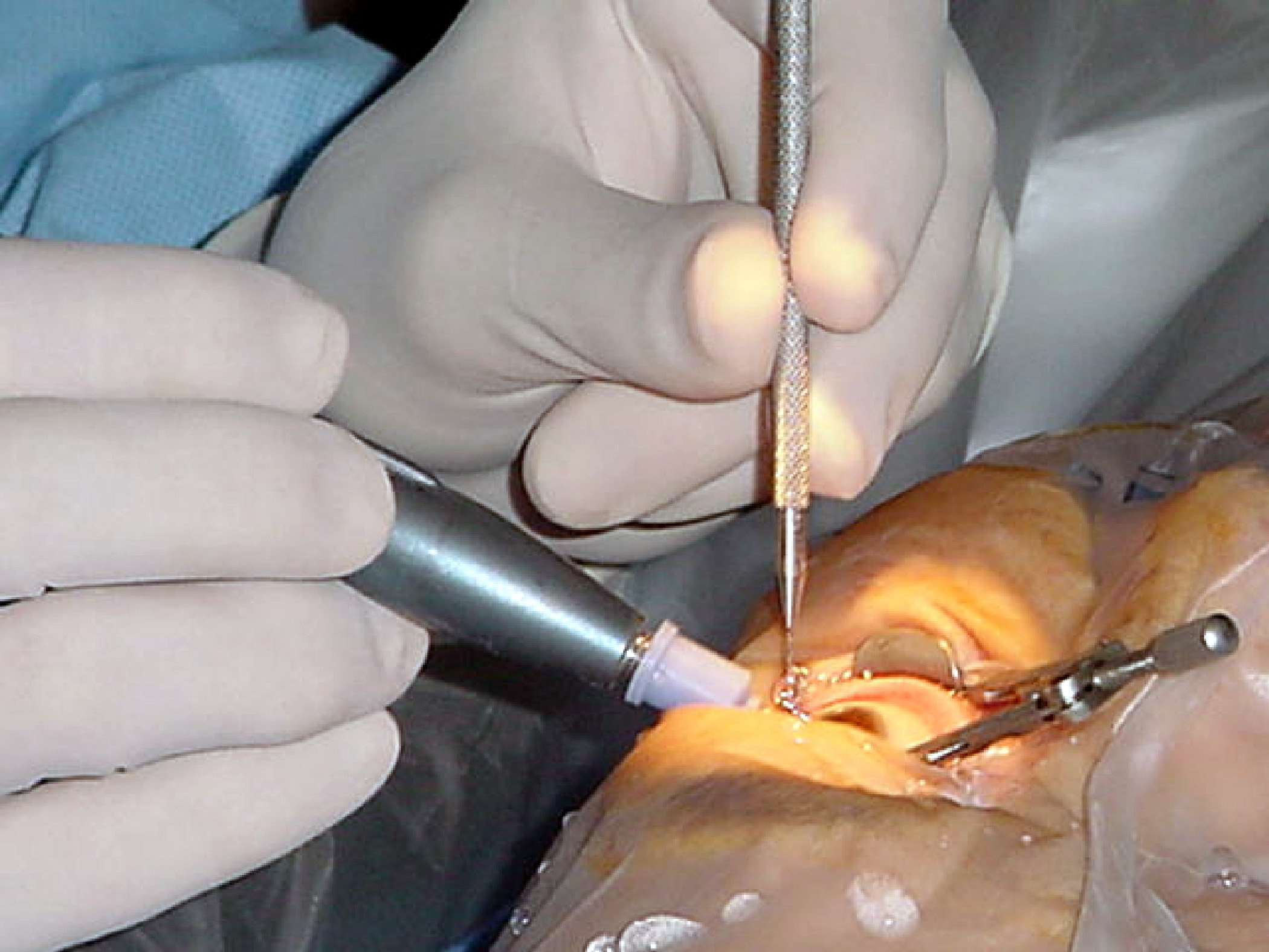

Although cataracts can occur in either one or both eyes and can affect both men and women, they do not cause eye discomfort or irritation. The eyesight will progressively worsen as cataracts slowly form and develop, resulting in hazy, dim, and blurred images that make it difficult to carry out everyday tasks.
What are the causes of cataracts?
The protein in the lens denatures, which causes cataracts. Protein degeneration causes the lenses to become opaque and cataracts to develop, which are a collection of thick protein clumps. Cataracts are more common in people over 60. Furthermore, cataracts can be caused by tissue damage around the lens or in the eye, by an infectious eye condition, or by congenital rubella infection in the womb.
What Causes Cataracts?
- Aging
- prenatal illnesses like rubella contracted by the mother during pregnancy
- Birth defects include prematurity, galactosemia, and hereditary cataracts.
- Some conditions, like arthritis, lupus, and Wilson’s disease
- Using steroids for an extended period of time to treat illnesses like lupus or arthritis
- Phenothiazine drugs that address particular forms of schizophrenia, like bipolar disorder
- Examples of such drugs include lipid-lowering agents, heart rhythm regulators, mydriatic eye drops, tamoxifen for breast cancer, etc.
- The likelihood of cataracts increases due to ocular illnesses like eye irritation, uveitis, eyeball infection, exfoliation syndrome, anterior segment ischemia, and retinitis pigmentosa (RP).
- Overexposure to ultraviolet (UV) radiation at high doses without using sunglasses or other safeguards
- The likelihood of developing cataracts is increased by an accident or contusion around the eye, such as metal or stone fragments being thrown into the eye or torn tissues inside the eyeball.
- Radiation treatment to the head or upper body
- Prior procedure on the retina or vitreous
- chemical exposure
- Electrical shock
- Secondhand smoke exposure
- consuming too much alcohol
What are the first signs of cataracts?
Nearsightedness and astigmatism are among the early signs of cataracts; as the degree and location of the increasing opacity of the lens gradually blurs the eyes as if a white coating or mist is obscuring vision until it reaches the advanced hypermature stage, which might result in glaucoma and eventual blindness. The symptoms of cataracts include the following:
- Objects seem to be in the dark even in bright settings; vision is hazy and unclear.
- observing the color of things change, seeing pictures as having a yellow tint, or seeing them fade.
- needing light to see, having trouble seeing at night, and concentrating more than usual.
- Photophobia: sensitivity to light; seeing halos or glare around light sources.
- The eyes’ visual acuity was markedly unequal.
- Due to the growth of cataracts, which affects visual acuity, change glasses more frequently.
- The white lens becomes visible in the center of the pupil when cataracts reach the hypermature stage. Without treatment, it may result in problems and ultimately blindness.
How many stages of cataracts are there?
The symptoms of cataracts fall into one of four categories, which are as follows:
- Stage I (beginning), the lens of the eye starts to become clouded, causing blurred vision. The eye also sees light reflecting into it, which interferes with vision and results in weary eyes. Early-stage cataracts are divided into two categories: 1) cloudy around the eye’s lens but clear in the middle; 2) clear around the eye’s lens but cloudy in the middle. At this stage, cataracts have little impact on eyesight until they start to get cloudier.
- Stage II (Intumescent) Stage The lens of the cataract becomes more opaque. The hazy region of the lens grows, and the swollen eye lens interferes with eyesight.
- Stage III The cataract is extremely hazy during (Mature). The opaqueness impairs vision by extending throughout the lens. Light cannot reach the retina, which severely restricts daily activities and vision.
- Stage IV (Hypermature) The cataract progresses to the hypermature stage. The cataract is now dense, hard, and may shrink or move, resulting in a variety of visual problems. At this stage, cataracts are harmful and need to be addressed right away. Untreated cataracts will eventually develop into glaucoma, which will ultimately result in blindness.
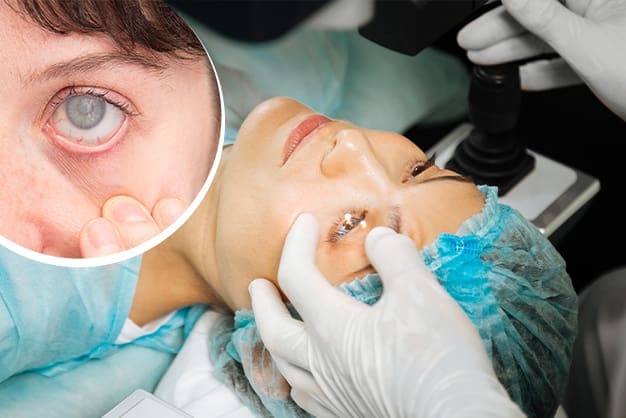

What methods are used to determine and evaluate cataracts?
Because cataracts do not cause any pain or noticeable changes in the eye until they reach more advanced stages, when a white spot appears in the pupil, it can be challenging to diagnose early-stage cataracts. People at risk should routinely inspect their eyes in the mirror. If you spot something unusual or are unsure if it is, see an ophthalmologist for a comprehensive evaluation. The following methods may be used to identify cataracts:
- A visual acuity exam: gauges the sharpness of vision in order to determine a person’s capacity to see.
- Tonometry: Determines intraocular pressure if any abnormalities are found.
- Slit-lamp examination: Examines the eyes using a narrow-beam microscope with a high-intensity light to inspect the interior ocular components, such as the cornea, pupil, lens, and retina, in order to identify any abnormalities.
- Retinal eye test: Involves injecting eye drops into the eye to dilate the pupil in order to see the retina. The ophthalmologist employs a magnifying lens to look for anomalies in the retina and optic nerve. Your vision will be momentarily blurred by dilating eye drops.
What is the treatment for cataracts?
When the symptoms are still in their early stages and do not have a major impact on daily activities. Regular eye exams will be scheduled by the ophthalmologists. To postpone the development of cataracts, they can recommend changes to eyeglasses and advise avoiding stimuli like strong sunlight. The ophthalmologist will recommend cataract surgery to replace the cloudy white lens with an artificial lens if the symptoms of the cataract get worse, affecting vision and everyday activities. The following are known techniques for cataract surgery:
- The gold standard in minimally invasive cataract surgery, phacoemulsification, which is widely practiced around the globe, employs high-frequency sound waves to fracture the cataract and replace it with an artificial lens. It offers a small incision, less pain, and a speedy recovery. The use of Digital Marking Systems and Wavefront Technology allows for accurate intraocular lens replacement, resulting in the best possible postoperative vision.
- Femtosecond Laser-Assisted Cataract Surgery uses high-performance femtosecond laser technology to help soften and fragment the cataract quickly, accurately, and safely, making it easier to break it up with less ultrasound energy.
- The surgical procedure of extracapsular cataract extraction (ECCE) involves removing the hazy central lens nucleus in one piece, then using suction to remove the softer outer layer of the lens, leaving the posterior lens capsule intact to support the implanted lens. A larger corneal incision is necessary in order to remove the lens during this procedure. This procedure is only performed by the ophthalmologist when the cataract is hypermature and difficult to break apart.
Click on the link below to learn more about this disease.
If Any Patient of ENT Requires Any Surgery, Opd Consultation Or Online Consultation In Clinic of ENT Specialist Doctor Dr. Sagar Rajkuwar ,He May Contact Him At The Following Address-
Prabha ENT Clinic, Plot no 345,Saigram Colony, Opposite Indoline Furniture Ambad Link Road ,Ambad ,1 km From Pathardi Phata Nashik ,422010 ,Maharashtra, India-Dr. Sagar Rajkuwar (MS-ENT), Cell No- 7387590194, 9892596635
Issued In Public Interest By –



